From their premises in Garryhill, Bagenalstown, Co Carlow, Sam and Clive Smyth started building trailers in 1994. “When we were contractors we bought a welder one wet January as we had spare time on our hands. Now we have lots of welders and no spare time. You could say we started from there with the first trailer we built going to a local contractor.”
Smyth trailers are sold all over the world. Of all the trailers made by Smyth, 80% are for export, with the UK being the biggest market. The company also sends trailers to India, New Zealand, America, mainland Europe and has tri-axle trailers going to Australia in May. Silage, grain, bale, dump and vegetable trailers are the main business.

Some tri-axle trailers that went to Denmark recently.Some tri-axle trailers that went to Denmark recently.
The Irish Farmers Journal asked Sam what changes have been requested and implemented to the trailers they build. “Nearly every trailer we build is now shod on 560/60 22.5 BKT flotation tyres. I can’t remember the last time I put a set of super-single tyres on a trailer apart from a dump-trailer. The advantage of the flotation tyres is you can carry more weight legally on each tyre because it’s wider than 500mm and less damage is done to the ground. LED lights are now standard across his trailers.

Sam Smyth; together with his brother Clive, the brothers own Smyth trailersSam Smyth who, with his brother Clive, owns Smyth trailers.
“Swinging tailboards are also a thing of the past as they have been replaced by hydraulic rear doors. In silage, it means the trailer can be reversed closer into the silage pit. It’s guaranteed to close provided the driver pulls the lever and it’s safer.
“You could say air-brakes are now almost standard on every trailer we build also as more contractors towing them are using 50km/h tractors. Again, they’re safe as if a trailer becomes detached from the tractor the brakes are immediately applied.
“Also, every Fieldmaster trailer we sell is fitted with the Diatag RT breakaway handbrake system for added safety. The most recent change to the trailers we build is the ball-and-spoon hitch. The big plus is you can carry an extra 1t on this versus a normal trailer-eye. This, and the fact that there’s far less movement or play in the hitch, gives a very smooth drive.”
Walking around the workshop, it is obvious a lot of work goes into making a trailer from the various workstations spread across a number of sheds.
“We start by welding the main chassis first. After this we add on the axles including the suspension.
“Our axles are rated to 105 km/h and can carry 12t per axle. The spring we use is 4in (100mm) wide and 1.96in (50mm) thick. If a spring breaks in the time it is with the original owner we will replace it for free such is our confidence in our suspension design.”
After this, Sam took us through the rest of the trailer building process. “Once the chassis is finished, we build the main body of the trailer and then it’s shot-blasted with steel balls back to bare metal.”
At this point the trailer is ready for painting.

After the trailer is "welded-off" it goes to be shot-blasted using steel balls. This makes the two-pack paint adhere better to the trailer.After the trailer is "welded-off" it goes to be shot-blasted using steel balls. This makes the two-pack paint adhere better to the trailer.
“We use a two-pack paint process which means the paint is baked on in a temperature-controlled shed. When the trailer is painted we begin final assembly, which is when the lights, reflective strips, speed disc and other options are added.”
Steering trailers
Parked in the yard I spotted a tri-axle trailer destined for an Irish contractor with a steel bar running parallel to the drawbar. According to Sam, “this is for a forced steering system we can fit to trailers. A local company, Distag QCS, supply it to us as a complete system.”
This system is installed on the 10 trailers heading to Robinson Farms. “Basically you have two options with steering axles – those that follow and those that are forced steered. This trailer has both front and rear forced steering axles, meaning the axles don’t have to be locked straight for reversing. Depending on which way the tractor turns, the first and third axle are steered. The bar is attached just left of the ball and spoon on the tractor to a smaller ball and spoon.

Forced steering is by means of a single bar that attaches to tractor beside the main hitch. Manoeuvrability is with increased two steering axles and scuffing is almost eliminated
Forced steering is by means of a single bar that attaches to tractor beside the main hitch. Manoeuvrability is with increased two steering axles and scuffing is almost eliminated
“On the trailer, the bar is attached to a hydraulic cylinder underneath the front of the trailer. When the tractor turns, this ram is extended or retracted. The exact same volume of oil flows from this ram to another ram on the axles it is steering, meaning even the slightest turn by the tractor is replicated by the trailer. It’s a popular option with longer trailers as it means they’re very manoeuvrable in small yards and there’s virtually no scuffing when the tractor turns.
From Carlow to New Mexico
The talk of tri-axle trailers brought up the recent shipment to Robinson Farms in New Mexico. “Kolton Robinson came across to Ireland last year to see our trailers. He heard about us through the Irish guys working for him during the harvesting season. One thing led to another and he ordered 10 26ft Supercubes from us which replaced Canadian-built Penta trailers.
“These trailers are more or less the same as any other trailer we sell in Ireland or across Europe except for a few things. Their trailers are 9ft wide and internally they are 8ft 6in high.
“Another thing we had to consider were the tyres. In Arizona it gets very hot so we had to make sure the tyres fitted didn’t burst in the heat. These trailers are fitted with 600/55 22.5 tyres which are heavy-duty high-speed tyres. Normal tyres are 165D rated whereas the tyres on these trailers are 177D rated to handle being towed behind a JCB Fastrac or Fendt which can get up to 60 km/h.”
Future of trailers
Before leaving, we asked Sam where he sees the future of trailers: “There are fewer people available to drive tractors so trailers are only going to get bigger. Tri-axle forced-steering Supercube trailers are going to become more popular as they are manoeuvrable and can carry larger loads. Larger trailers could reduce the number of staff and tractors a contractors needs.”
What is a Supercube trailer?

Smyths developed the term for his new design of trailer which is protected under European design registration. Its distinctive design includes a sloping front to carry more than normal vertically designed trailers. Other specification includes extra LED lights at the front, side and rear of the trailer. The trailer is also fitted with automatic reversing lights which are illuminated once the trailer is tipped slightly making reversing at night safer.
Read more
Self-propelled harvester numbers on the up.
Silage and the family Stone: meet the family harvesting team from Laois
From their premises in Garryhill, Bagenalstown, Co Carlow, Sam and Clive Smyth started building trailers in 1994. “When we were contractors we bought a welder one wet January as we had spare time on our hands. Now we have lots of welders and no spare time. You could say we started from there with the first trailer we built going to a local contractor.”
Smyth trailers are sold all over the world. Of all the trailers made by Smyth, 80% are for export, with the UK being the biggest market. The company also sends trailers to India, New Zealand, America, mainland Europe and has tri-axle trailers going to Australia in May. Silage, grain, bale, dump and vegetable trailers are the main business.

Some tri-axle trailers that went to Denmark recently.Some tri-axle trailers that went to Denmark recently.
The Irish Farmers Journal asked Sam what changes have been requested and implemented to the trailers they build. “Nearly every trailer we build is now shod on 560/60 22.5 BKT flotation tyres. I can’t remember the last time I put a set of super-single tyres on a trailer apart from a dump-trailer. The advantage of the flotation tyres is you can carry more weight legally on each tyre because it’s wider than 500mm and less damage is done to the ground. LED lights are now standard across his trailers.

Sam Smyth; together with his brother Clive, the brothers own Smyth trailersSam Smyth who, with his brother Clive, owns Smyth trailers.
“Swinging tailboards are also a thing of the past as they have been replaced by hydraulic rear doors. In silage, it means the trailer can be reversed closer into the silage pit. It’s guaranteed to close provided the driver pulls the lever and it’s safer.
“You could say air-brakes are now almost standard on every trailer we build also as more contractors towing them are using 50km/h tractors. Again, they’re safe as if a trailer becomes detached from the tractor the brakes are immediately applied.
“Also, every Fieldmaster trailer we sell is fitted with the Diatag RT breakaway handbrake system for added safety. The most recent change to the trailers we build is the ball-and-spoon hitch. The big plus is you can carry an extra 1t on this versus a normal trailer-eye. This, and the fact that there’s far less movement or play in the hitch, gives a very smooth drive.”
Walking around the workshop, it is obvious a lot of work goes into making a trailer from the various workstations spread across a number of sheds.
“We start by welding the main chassis first. After this we add on the axles including the suspension.
“Our axles are rated to 105 km/h and can carry 12t per axle. The spring we use is 4in (100mm) wide and 1.96in (50mm) thick. If a spring breaks in the time it is with the original owner we will replace it for free such is our confidence in our suspension design.”
After this, Sam took us through the rest of the trailer building process. “Once the chassis is finished, we build the main body of the trailer and then it’s shot-blasted with steel balls back to bare metal.”
At this point the trailer is ready for painting.

After the trailer is "welded-off" it goes to be shot-blasted using steel balls. This makes the two-pack paint adhere better to the trailer.After the trailer is "welded-off" it goes to be shot-blasted using steel balls. This makes the two-pack paint adhere better to the trailer.
“We use a two-pack paint process which means the paint is baked on in a temperature-controlled shed. When the trailer is painted we begin final assembly, which is when the lights, reflective strips, speed disc and other options are added.”
Steering trailers
Parked in the yard I spotted a tri-axle trailer destined for an Irish contractor with a steel bar running parallel to the drawbar. According to Sam, “this is for a forced steering system we can fit to trailers. A local company, Distag QCS, supply it to us as a complete system.”
This system is installed on the 10 trailers heading to Robinson Farms. “Basically you have two options with steering axles – those that follow and those that are forced steered. This trailer has both front and rear forced steering axles, meaning the axles don’t have to be locked straight for reversing. Depending on which way the tractor turns, the first and third axle are steered. The bar is attached just left of the ball and spoon on the tractor to a smaller ball and spoon.

Forced steering is by means of a single bar that attaches to tractor beside the main hitch. Manoeuvrability is with increased two steering axles and scuffing is almost eliminated
Forced steering is by means of a single bar that attaches to tractor beside the main hitch. Manoeuvrability is with increased two steering axles and scuffing is almost eliminated
“On the trailer, the bar is attached to a hydraulic cylinder underneath the front of the trailer. When the tractor turns, this ram is extended or retracted. The exact same volume of oil flows from this ram to another ram on the axles it is steering, meaning even the slightest turn by the tractor is replicated by the trailer. It’s a popular option with longer trailers as it means they’re very manoeuvrable in small yards and there’s virtually no scuffing when the tractor turns.
From Carlow to New Mexico
The talk of tri-axle trailers brought up the recent shipment to Robinson Farms in New Mexico. “Kolton Robinson came across to Ireland last year to see our trailers. He heard about us through the Irish guys working for him during the harvesting season. One thing led to another and he ordered 10 26ft Supercubes from us which replaced Canadian-built Penta trailers.
“These trailers are more or less the same as any other trailer we sell in Ireland or across Europe except for a few things. Their trailers are 9ft wide and internally they are 8ft 6in high.
“Another thing we had to consider were the tyres. In Arizona it gets very hot so we had to make sure the tyres fitted didn’t burst in the heat. These trailers are fitted with 600/55 22.5 tyres which are heavy-duty high-speed tyres. Normal tyres are 165D rated whereas the tyres on these trailers are 177D rated to handle being towed behind a JCB Fastrac or Fendt which can get up to 60 km/h.”
Future of trailers
Before leaving, we asked Sam where he sees the future of trailers: “There are fewer people available to drive tractors so trailers are only going to get bigger. Tri-axle forced-steering Supercube trailers are going to become more popular as they are manoeuvrable and can carry larger loads. Larger trailers could reduce the number of staff and tractors a contractors needs.”
What is a Supercube trailer?

Smyths developed the term for his new design of trailer which is protected under European design registration. Its distinctive design includes a sloping front to carry more than normal vertically designed trailers. Other specification includes extra LED lights at the front, side and rear of the trailer. The trailer is also fitted with automatic reversing lights which are illuminated once the trailer is tipped slightly making reversing at night safer.
Read more
Self-propelled harvester numbers on the up.
Silage and the family Stone: meet the family harvesting team from Laois













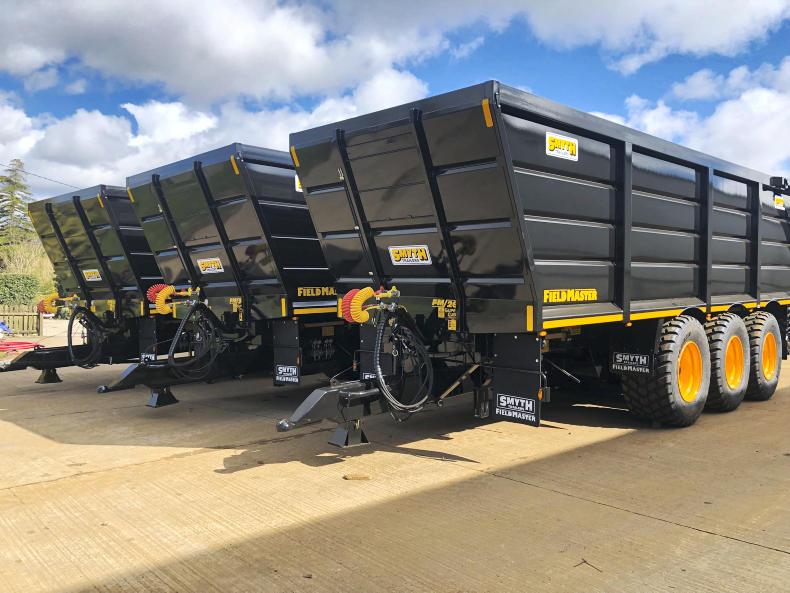
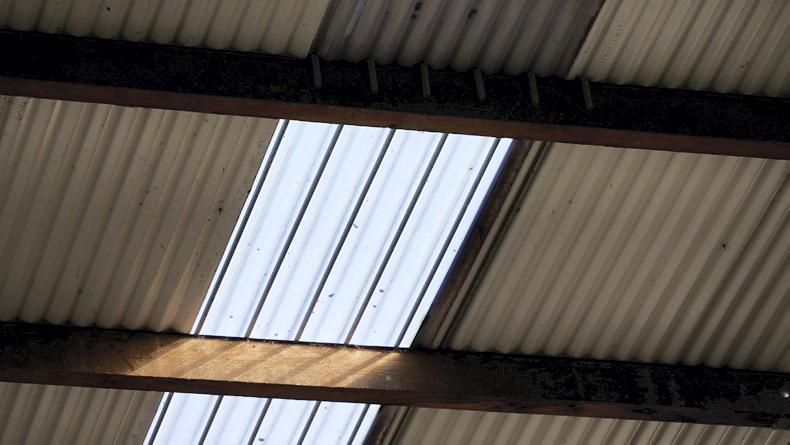
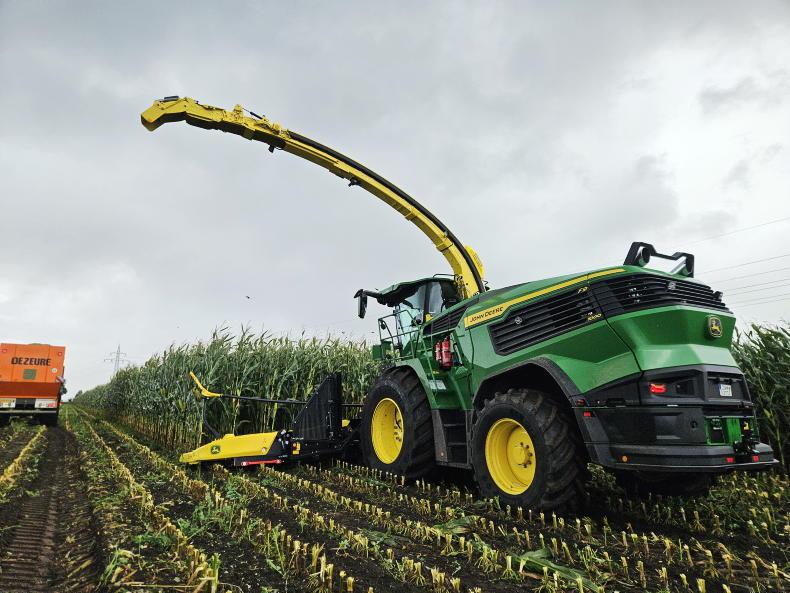
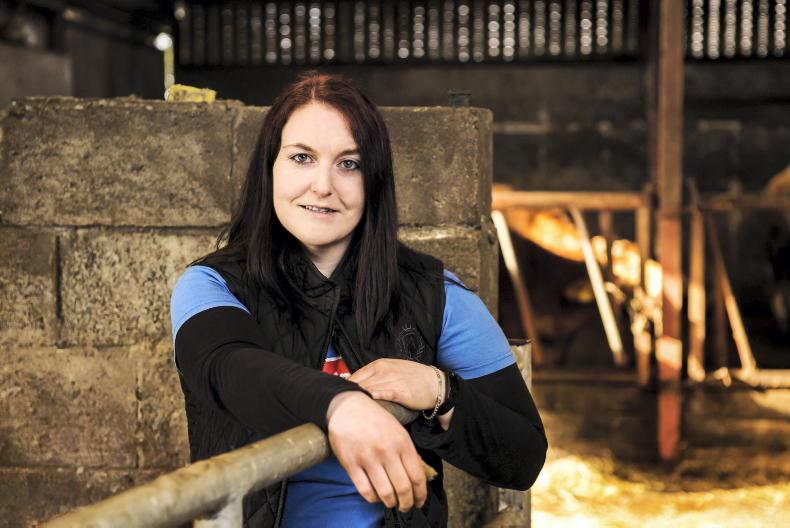
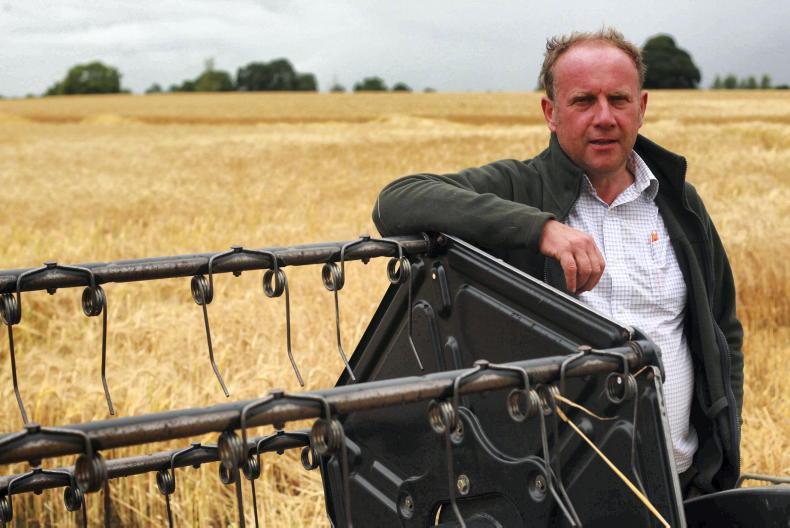
SHARING OPTIONS